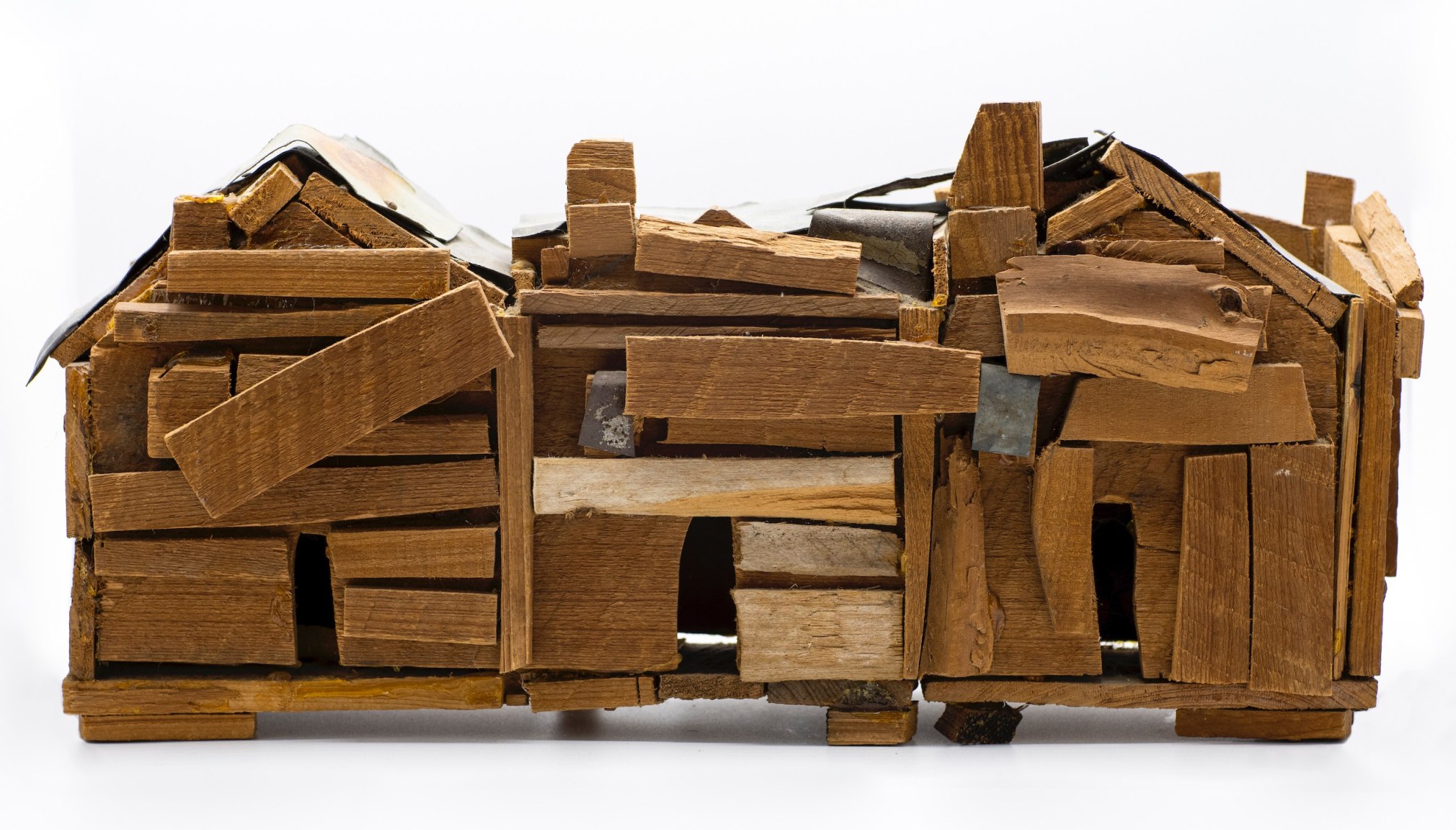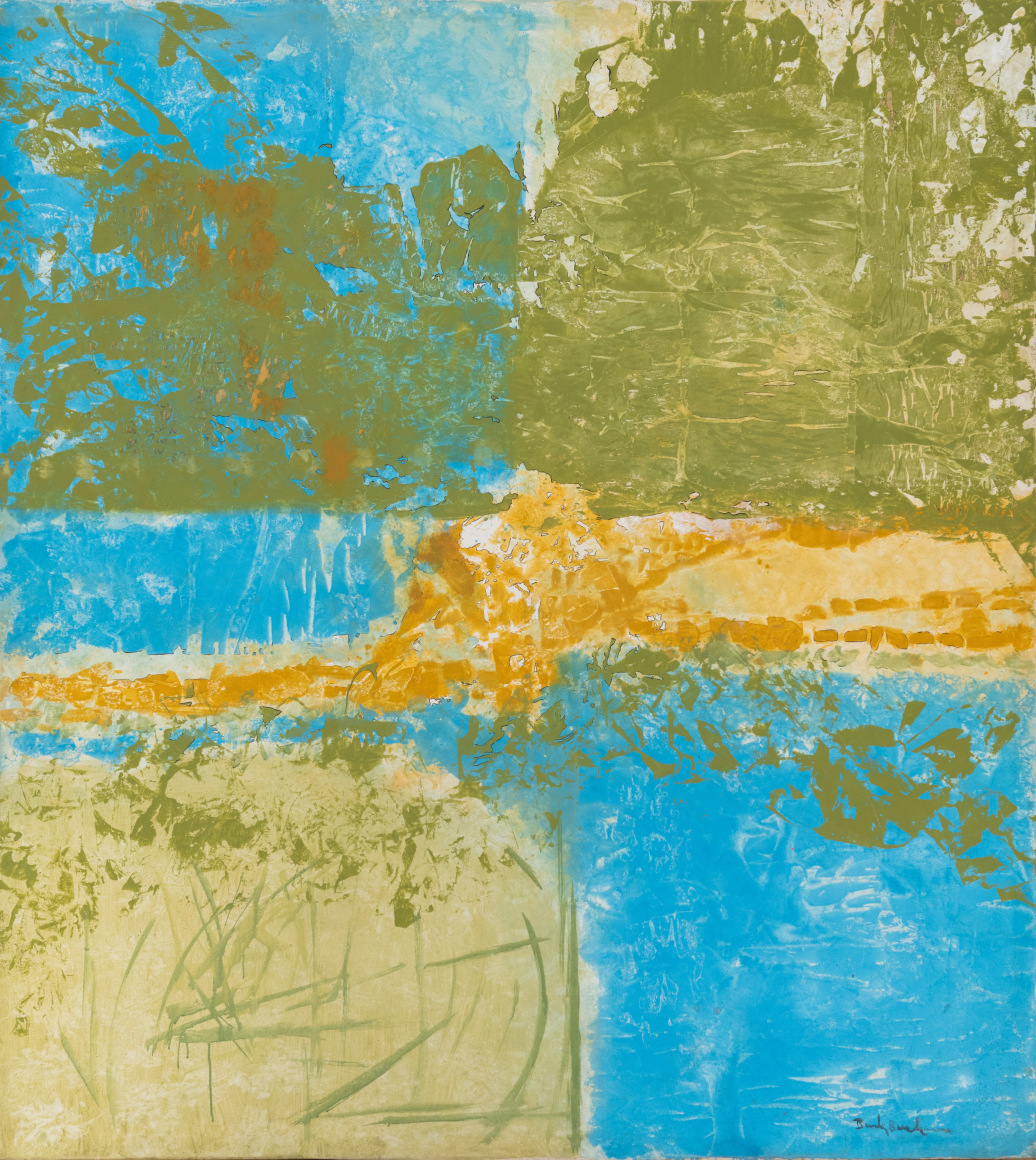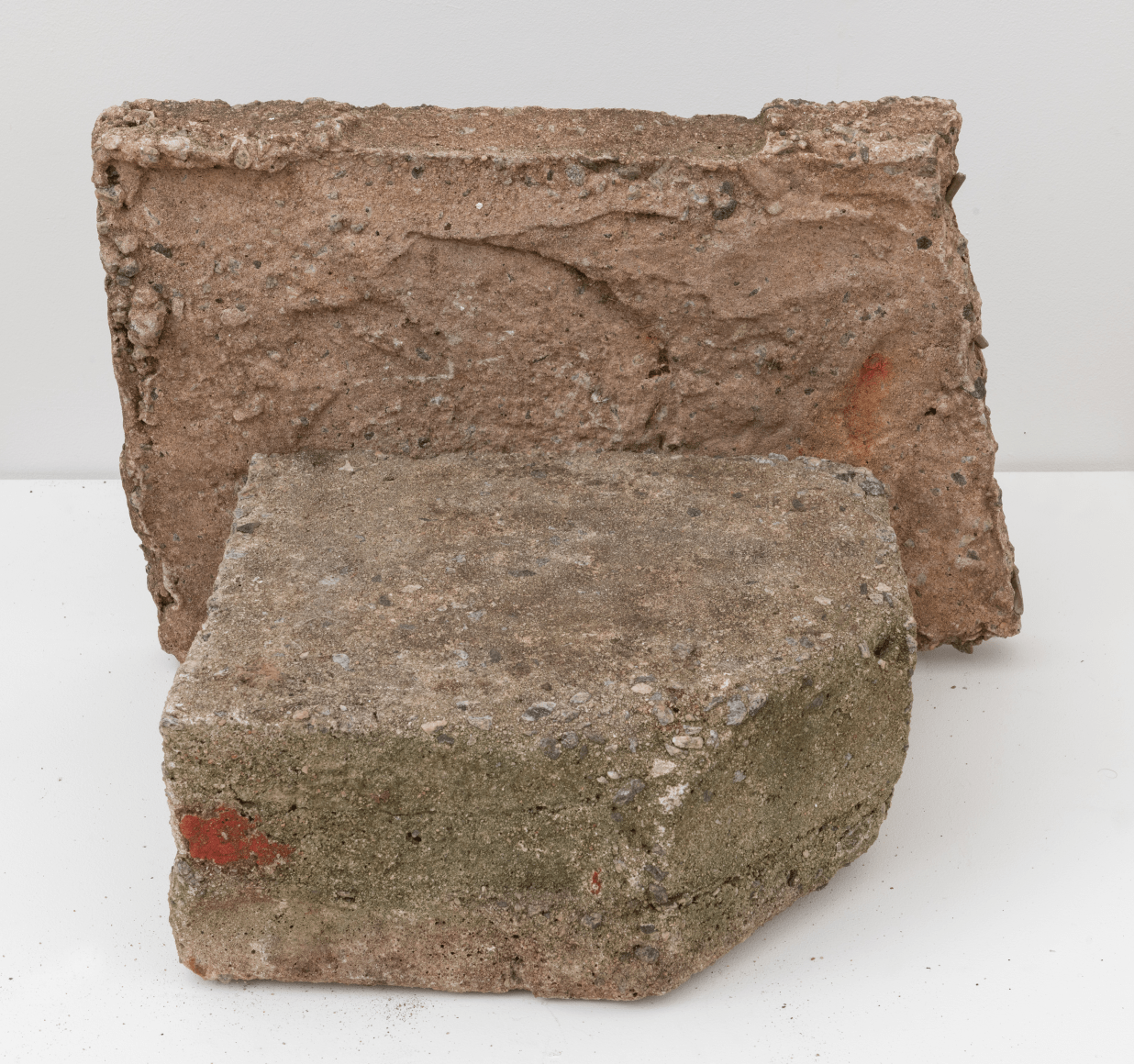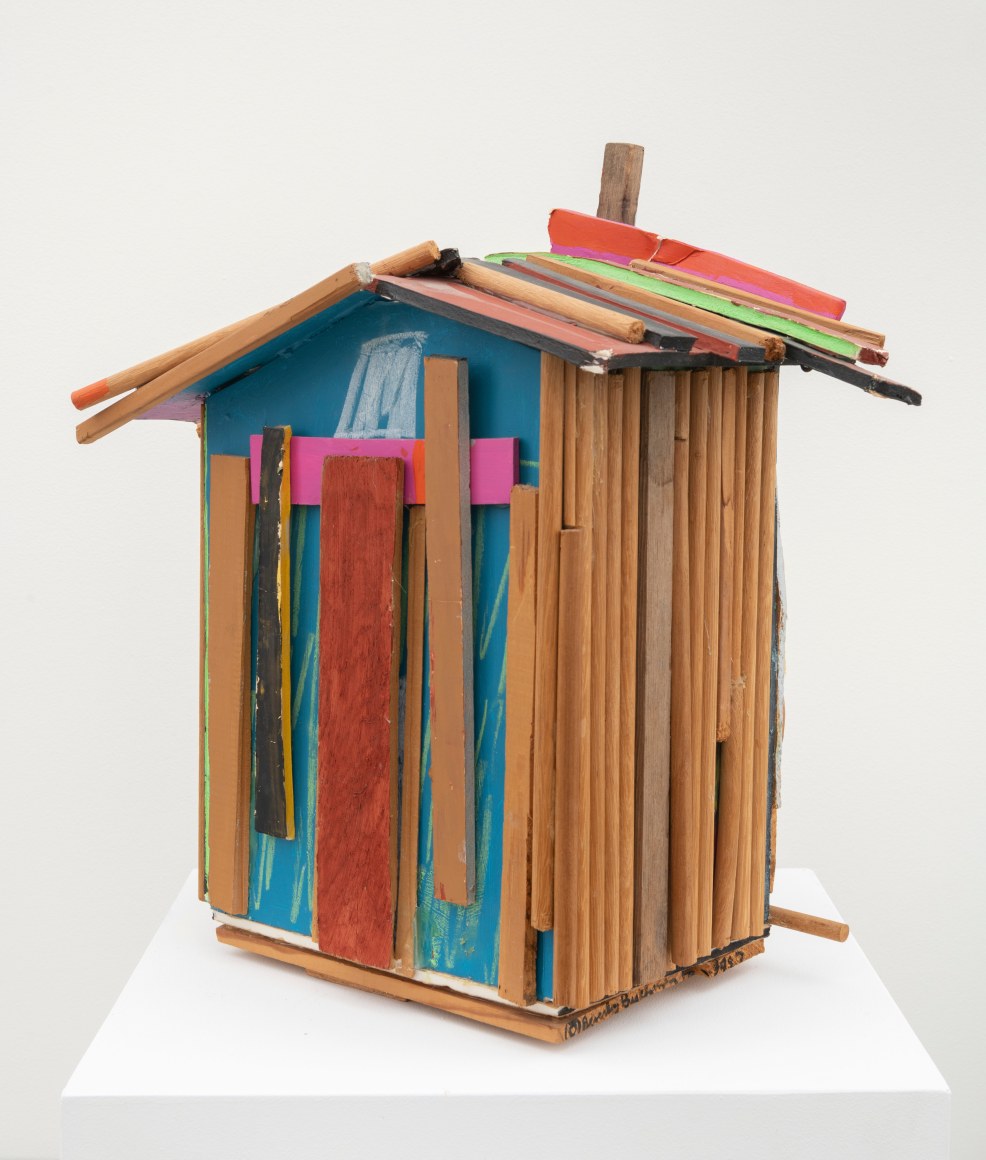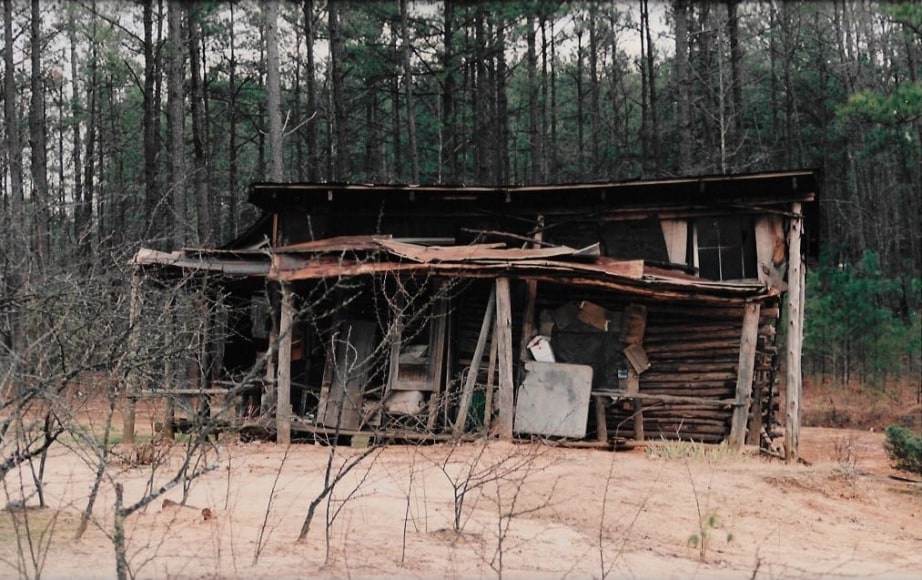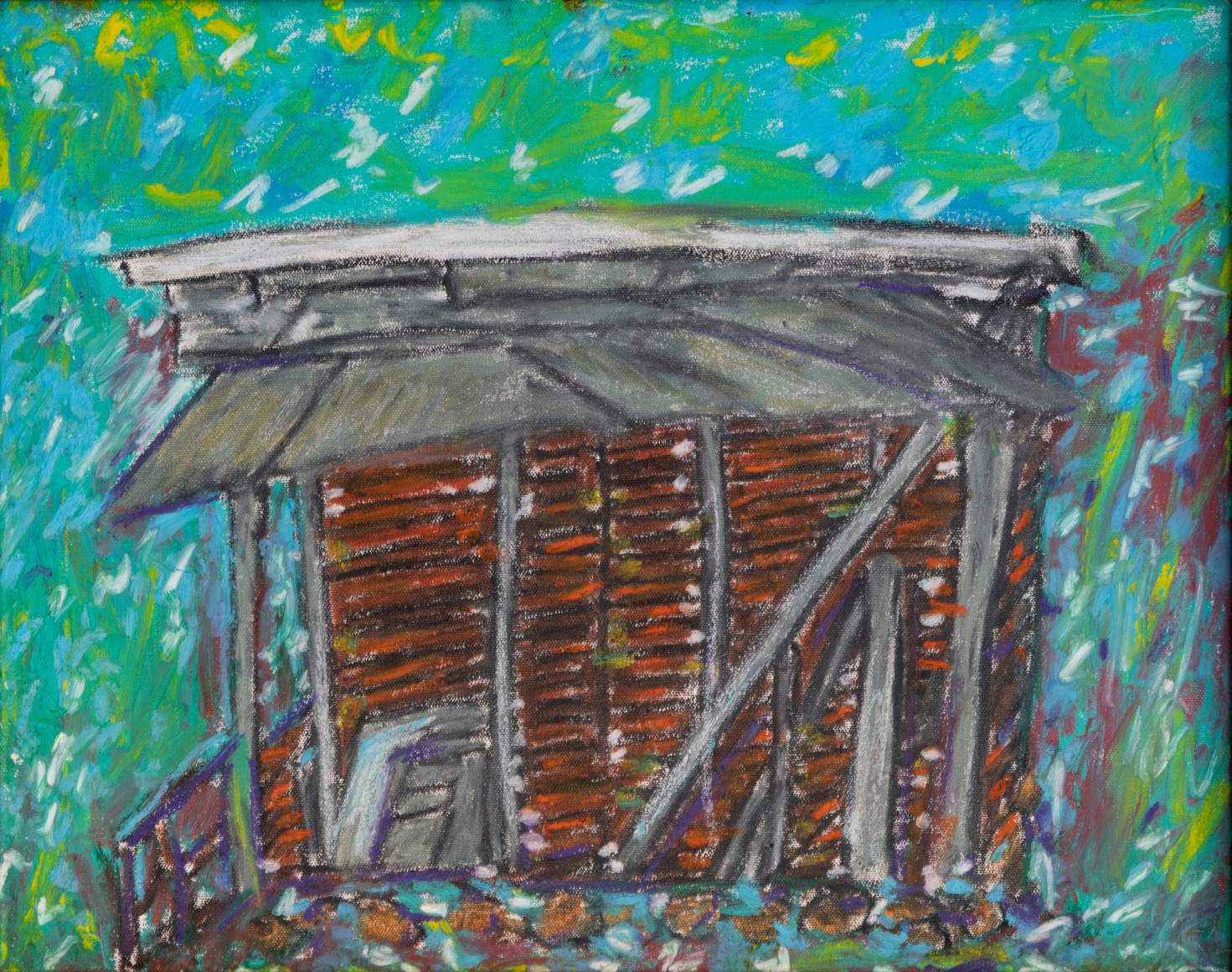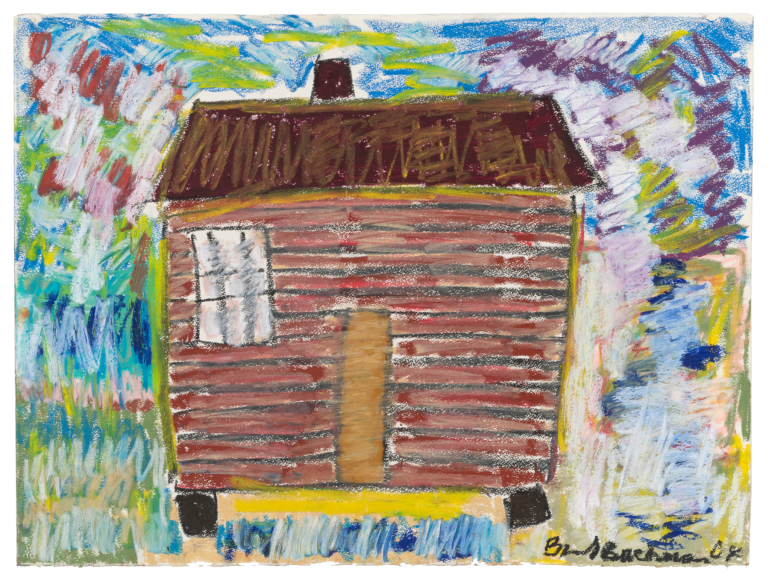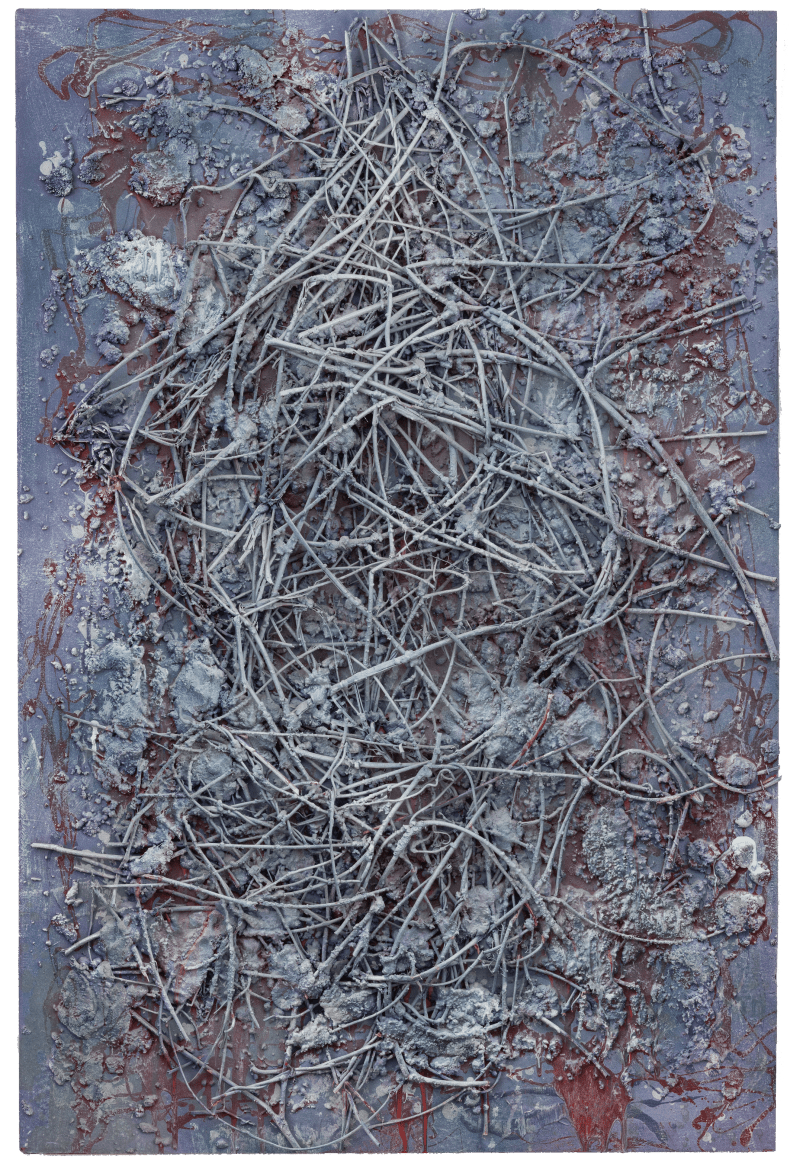Beverly Buchanan (1940 - 2015) and Thornton Dial (1928 - 2016) were both fiercely independent artists from the American South. The works selected for Frieze New York depict well-worn habitations and abstracted images inspired by and, at times, derived from actual places they knew. Dial, unlike Buchanan, never received formal training, but both artists traversed similar ground. Dial, inspired by Southern “yard” art, used salvaged materials to create poignant tributes and homages to notable figures and places from the past. Buchanan was an admirer, but navigated an artistic path that was in a way the converse of his—she began with abstraction and moved into figuration.
In 1976, Buchanan completed a series of paintings for City Walls, an exhibition at the Montclair Art Museum. Wall #75 (1976) is an abstracted representation of a decaying urban façade that has not been exhibited for almost fifty years. In 1977, Buchanan began making minimalist stone sculptures based on the idea of “ruination.” These cast-concrete works possess the solemnity of grave markers while also evoking archaeological ruins. They bear the unmistakable touch of the artist— the imprint of her hand, vestiges of red and black paint after decades of weathering, and vertical indentations reminiscent of Wall Column (1981), which is part of the Metropolitan Museum of Art’s collection.
By the mid-eighties, Buchanan began developing the iconography she would become best known for: shacks and barns from the rural south that she manifested in various media: rough-hewn wood sculptures, vibrant oil pastels, and photographs. These works were not conceived as generalized accounts of a collective history—indeed, the artist ascribed highly personal “legends” to many of them, telling stories of the inhabitants and casting Buchanan in the role of incidental anthropologist.
Born in Emelle, Alabama, Dial had been a metalworker at the Pullman Standard Plant in Bessemer, which made railroad cars before closing in 1981. Over the next three decades, he was propelled into the canons of both Self-Taught and Contemporary art history with major solo exhibitions at the American Folk Art Museum, the New Museum of Contemporary Art (1993, two venues), the Museum of Fine Arts, Houston (2005), the Indianapolis Museum of Art (2011), and a predominant place in History Refused to Die: Highlights from the Souls Grown Deep Foundation Gift, the Metropolitan Museum’s 2018 exhibition named after a Dial masterpiece.
Beverly Buchanan, on the other hand, was raised in academia in South Carolina and earned two graduate degrees in the sciences at Columbia University. In 1971, she enrolled at the Art Students League where she studied with Norman Lewis (1909-1979). Awarded fellowships from the John Simon Guggenheim Memorial Foundation and the National Endowment for the Arts, Buchanan’s work was exhibited extensively in galleries and museums during her lifetime and a widely acclaimed posthumous retrospective, Ruins and Rituals, was held at the Brooklyn Museum in 2016-17.


